The Ultimate Guide to Euro Bike Trips: Exploring the Best Mountain Biking Destinations in Europe
Are you ready to embark on an epic mountain biking adventure across Europe? From adrenaline-pumping trails to breathtaking landscapes, Europe offers some of the most exhilarating experiences for MTB enthusiasts.
In this guide, we’ll delve into the top bike parks and mountain biking destinations across Europe, and provide essential tips for traveling with your MTB, helping you plan the ultimate Euro bike trip.
INTRODUCTION TO EURO BIKE TRIPS
Embark on an exhilarating journey through Europe’s diverse mountain biking terrain with our comprehensive guide to Euro Bike Trips. Discover the continent’s top destinations, from breathtaking alpine trails to adrenaline-pumping bike parks.
Learn about the logistics of traveling with your MTB, including essential tips for flying with your bike. Get ready to explore the biggest MTB parks in Europe and uncover hidden gems along the way. Whether you’re a seasoned rider or a novice adventurer, this guide is your key to an unforgettable biking experience across Europe.
The Best Bike Parks in Europe
Check out the top bike parks in Europe as rated by riders from the Nightfox team who have experienced them firsthand. From gravity-defying downhill trails to flowy singletracks and jump lines, these parks offer something for riders of all skill levels. Immerse yourself in breathtaking landscapes as you carve your way through forests, mountains, and valleys.

Les Gets Bike Park
Situated in the French Alps, Les Gets Bike Park offers a diverse range of trails catering to riders of all abilities. From gentle, scenic routes for beginners to challenging downhill tracks and freeride trails for seasoned riders, this park provides a thrilling experience amidst breathtaking mountain scenery.
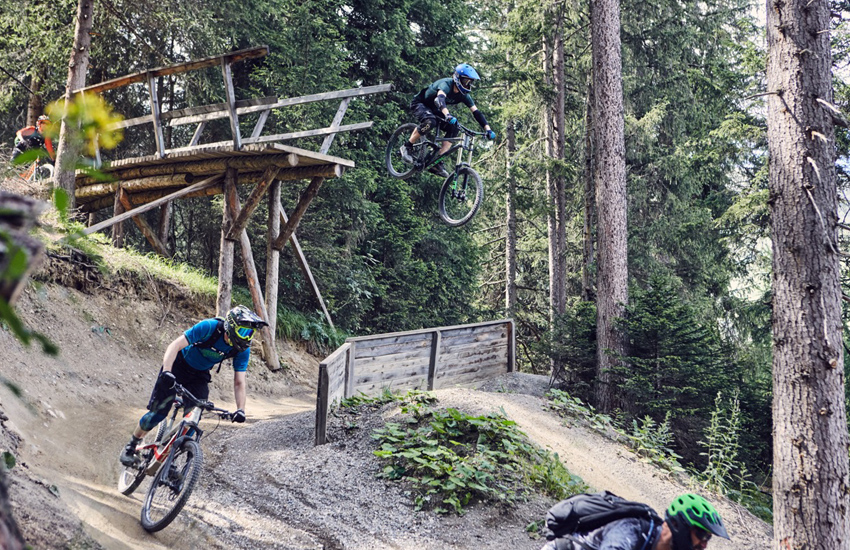
Bikepark Serfaus-Fiss-Ladis
Nestled in the Austrian Alps, this expansive bike park offers a perfect blend of natural terrain and purpose-built features. With trails ranging from gentle family-friendly routes to expert-level downhill tracks, Serfaus-Fiss-Ladis caters to riders of all ages and skill levels.
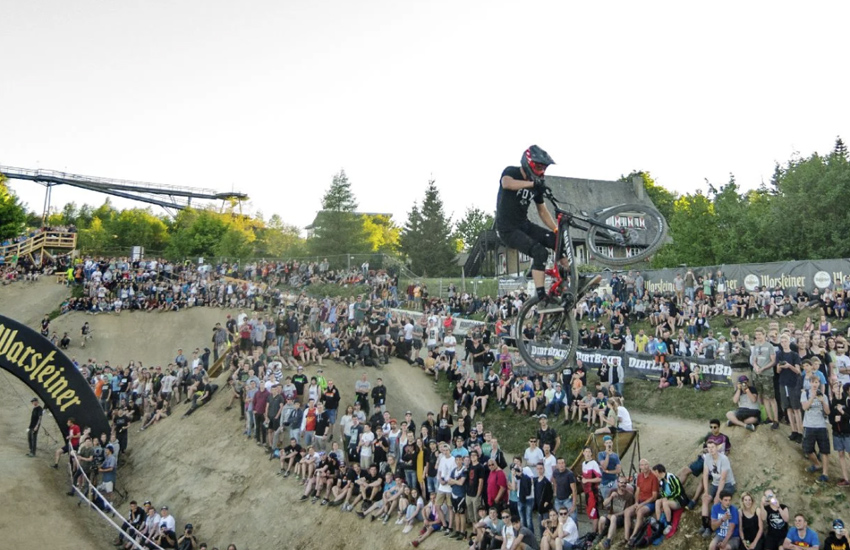
Bikepark Winterberg
Located in Germany’s Sauerland region, Winterberg Bike Park is a popular destination for mountain bikers seeking adrenaline-fueled thrills. With a variety of trails ranging from technical downhill descents to jump lines and freeride tracks, Winterberg offers something for every rider.
Bikepark Pila
Situated in the Italian Alps, Pila Bike Park offers an extensive network of trails with stunning panoramic views of the Aosta Valley. From fast-paced downhill runs to technical enduro trails and flowy singletracks, Pila caters to riders of all abilities, making it an ideal destination for mountain biking adventures.
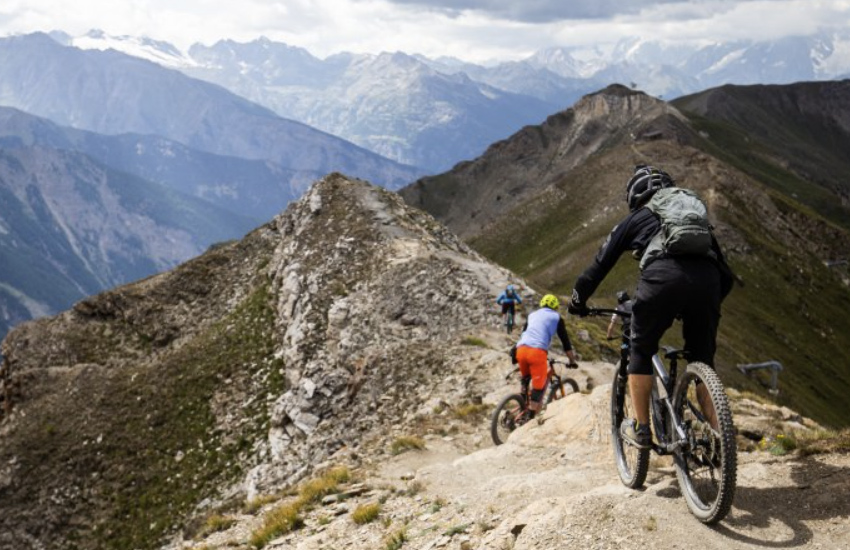
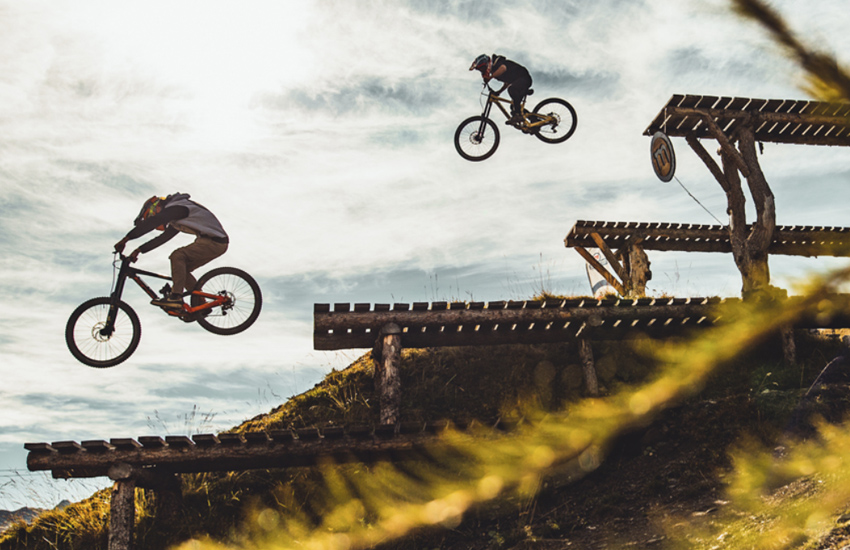
Bikepark Livigno
Situated in the Italian Alps, Livigno Bike Park offers a diverse range of trails amidst breathtaking mountain scenery. From beginner-friendly green trails to expert-level black runs, Livigno caters to riders of all skill levels, making it an ideal destination for mountain biking enthusiasts.
Bikepark Verbier
Located in the Swiss Alps, Verbier Bike Park boasts an array of trails ranging from gentle beginner routes to challenging downhill descents. With stunning alpine vistas as a backdrop, riders can enjoy a mix of natural terrain and purpose-built features, ensuring an unforgettable mountain biking experience.

Beyond the exhilarating thrills of bike parks
Europe offers an array of awe-inspiring mountain biking destinations waiting to be explored. From the rugged trails of the French Alps to the scenic routes of the Scottish Highlands, there’s no shortage of breathtaking landscapes and challenging terrain to satisfy every rider’s craving for adventure.
In Switzerland, the pristine trails of the Alps beckon with their sweeping views and technical descents, while the lush forests of Slovenia promise endless singletracks to discover. For those seeking coastal rides, Portugal’s Algarve region boasts a unique blend of sandy beaches and rocky cliffs perfect for a day of exploration. Whether you’re drawn to the majestic peaks of the Dolomites or the volcanic landscapes of Iceland, Europe offers a diverse range of mountain biking experiences that are sure to leave you exhilarated and inspired.
Did you know that?
Austria boasts the highest number of bike parks in Europe, offering a diverse range of terrain and trails catering to riders of all levels, from beginners to seasoned professionals.
TRAVELING WITH YOUR MOUNTAIN BIKE
Explore the world on two wheels with your mountain bike
Traveling with your mountain bike opens up a world of adventure and exploration, but it comes with its own set of challenges. Whether you’re embarking on a weekend getaway or a globetrotting expedition, knowing how to pack and transport your bike securely is essential for a hassle-free journey.
First and foremost, invest in a quality bike bag or box to protect your precious cargo during transit. Opt for a sturdy, hard-shell case with ample padding to shield your bike from bumps and impacts. Before packing, remove the pedals, handlebars, and wheels, and securely fasten them to the frame using zip ties or straps. Wrap delicate components like the derailleur and brake levers in foam or bubble wrap to prevent damage.
When flying with your bike, familiarize yourself with the airline’s policies and fees for transporting sports equipment. Some airlines allow bikes to be checked as standard luggage, while others may require you to pay an additional fee or book a separate cargo space. Be sure to pack essential tools and spare parts in your bike bag, including a multi-tool, pump, and spare tubes, to handle any unexpected repairs on the road.
Planning your Euro Bike Trip
Prepare for your Euro bike trip by considering key factors like weather and trail conditions. Optimal times to visit vary by region; for example, summer offers ideal conditions in the Alps, while spring and autumn are prime for destinations like the Mediterranean.
Research accommodations strategically located near trails to maximize your time on the bike. Craft a flexible itinerary, allowing for spontaneity while ensuring you hit must-ride spots. Prioritize trails based on your skill level and preferences, considering factors like technical difficulty and terrain variety.
Seek advice from local bike shops and online communities for insider tips on lesser-known trails and hidden gems. Pack essentials such as spare parts, tools, and protective gear to handle any challenges you may encounter. Remember to respect local regulations and trail etiquette, leaving no trace of your passage.
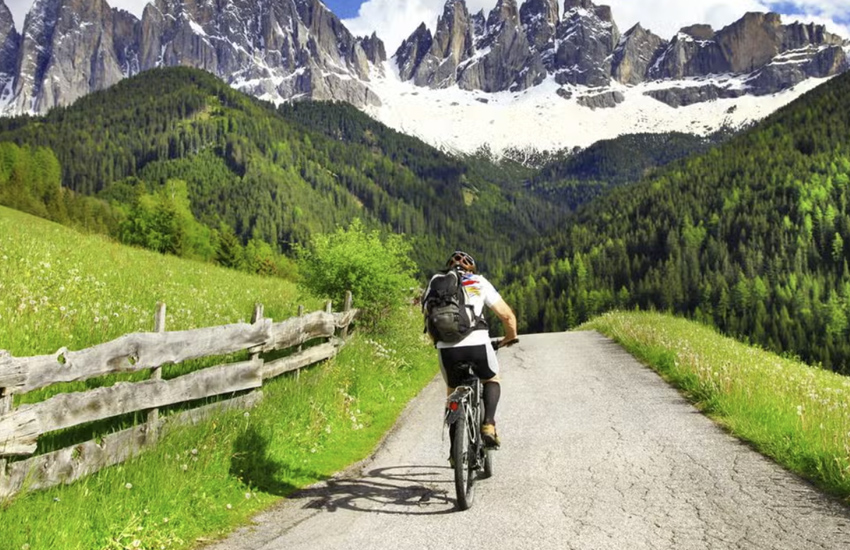
Exploring Local Culture
Explore quaint villages steeped in history, adorned with historic landmarks that narrate tales of bygone eras. Indulge your taste buds with local cuisine, each dish a reflection of the region’s heritage and traditions.
Immerse yourself in the unique charm of each locale, where every corner reveals a new facet of European culture waiting to be discovered. Whether it’s the cobblestone streets of old towns or the vibrant energy of bustling markets, Europe’s mountain biking destinations offer an unparalleled blend of history, culture, and adventure.
Did you know that?
Bikepark Serfaus-Fiss-Ladis in Austria stands as one of the largest MTB parks in Europe, boasting an extensive network of trails spread across diverse terrain. With over 70 kilometers of trails catering to riders of all skill levels, it promises an exhilarating experience for mountain biking enthusiasts.
COMMON QUESTIONS
How to cycle across Europe?
Cycling across Europe is an exciting adventure, and the EuroVelo network makes it easier than ever. EuroVelo consists of 17 long-distance cycling routes that connect and cross the entire continent, covering over 90,000 km. These routes are designed to be safe and enjoyable for cyclists of all levels, offering a mix of dedicated bike paths and low-traffic roads.
To cycle across Europe using EuroVelo, start by choosing your route based on your interests. For example, EuroVelo 6 follows the rivers from the Atlantic to the Black Sea, while EuroVelo 15 traces the Rhine River. Plan your journey with detailed maps and resources available on the EuroVelo website, which provides route information, accommodation options, and points of interest along the way.
Ensure your bike is well-maintained and equipped for long-distance travel. Pack appropriately for various weather conditions and carry essentials such as spare parts, tools, and first aid supplies.
Whether you embark on a shorter segment or tackle an entire route, EuroVelo offers a fantastic way to explore Europe’s diverse landscapes and cultures by bike.
What is the best EuroVelo route?
One of the best EuroVelo routes is EuroVelo 6, also known as the “Rivers Route.” This scenic path stretches from the Atlantic Ocean in France to the Black Sea in Romania, covering around 4,450 kilometers.
It follows several major European rivers, including the Loire, the Rhine, and the Danube, offering cyclists a mix of cultural experiences, beautiful landscapes, and historical landmarks. This route is ideal for both experienced cyclists and those new to long-distance biking, providing a diverse and unforgettable journey across Europe.
What is the best bike tour planner?
One of the best bike tour planners is Komoot. Komoot is a versatile app that offers detailed route planning tailored to cyclists’ preferences, whether you’re looking for a leisurely ride or an adventurous trail.
It provides turn-by-turn navigation, highlights points of interest, and even suggests routes based on your fitness level and biking style. With offline maps and community-driven recommendations, Komoot is an excellent tool for planning and navigating your bike tours with ease.
Is Google Maps good for cycle routes?
Yes, Google Maps can be quite useful for planning cycle routes, but there are some considerations to keep in mind:
Pros:
– Wide Coverage: Google Maps provides comprehensive coverage, including many cycling paths, trails, and bike lanes in urban and rural areas.
– Real-Time Information: It offers real-time data such as traffic conditions, which can be useful for avoiding busy roads.
– Customizable Routes: You can customize your route by adding waypoints, and it will suggest alternate paths.
– Points of Interest: It highlights points of interest, such as restaurants, rest stops, and bike shops along your route.
– Street View: The Street View feature helps you get a visual sense of the route before you ride it.
Cons:
– Not Always Bike-Specific: Sometimes, the suggested routes may not be the most bike-friendly, particularly in terms of safety or terrain.
– Limited Trail Information: While it includes many trails, Google Maps may not have detailed information on all cycling-specific routes, especially in remote areas.
– Route Updates: Not all bike lanes and paths are consistently updated, so newer routes might be missing.
– Combine with Other Tools: Use Google Maps in conjunction with specialized cycling apps like Komoot, Ride with GPS, or Strava, which may offer more detailed bike-specific routes and community insights.
– Check Reviews and Photos: Look at reviews and photos of routes on Google Maps to get a better idea of what to expect.
– Verify Elevation: Pay attention to the elevation profile Google Maps provides for cycle routes, as some suggested paths might be more challenging than they appear.
CONCLUSION
As we conclude our exploration of Euro bike trips, let’s reflect on the exhilarating experiences and breathtaking landscapes awaiting riders across Europe. From the adrenaline-fueled descents of world-class bike parks to the scenic trails winding through picturesque villages and historic landmarks, the possibilities for adventure are endless.
Whether you’re a seasoned rider seeking new challenges or a novice eager to explore, Europe offers a diverse array of trails to suit every skill level and preference. So, gear up, hit the trails, and embark on an unforgettable journey filled with thrills, camaraderie, and the sheer joy of mountain biking in Europe.

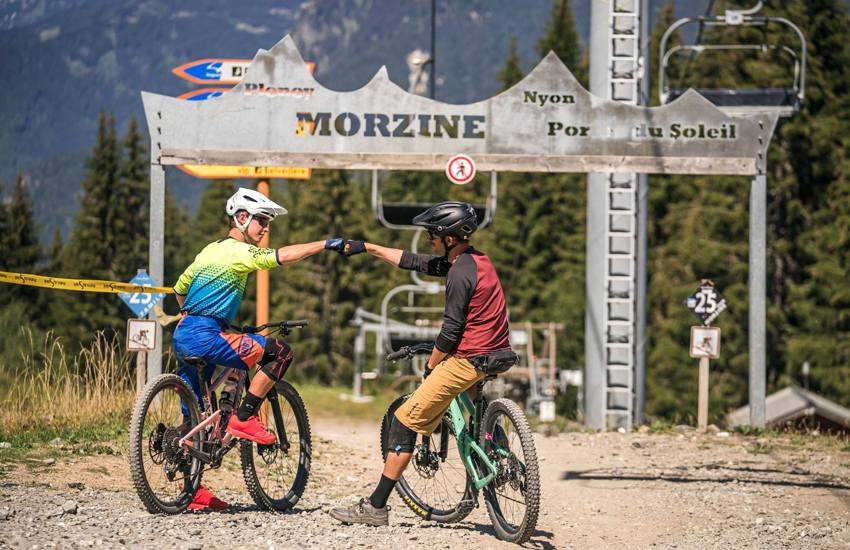
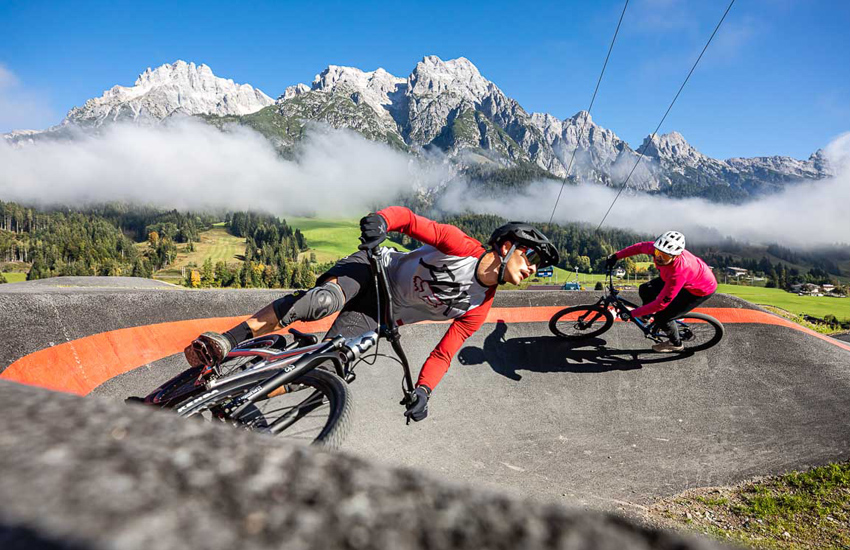
Get Social